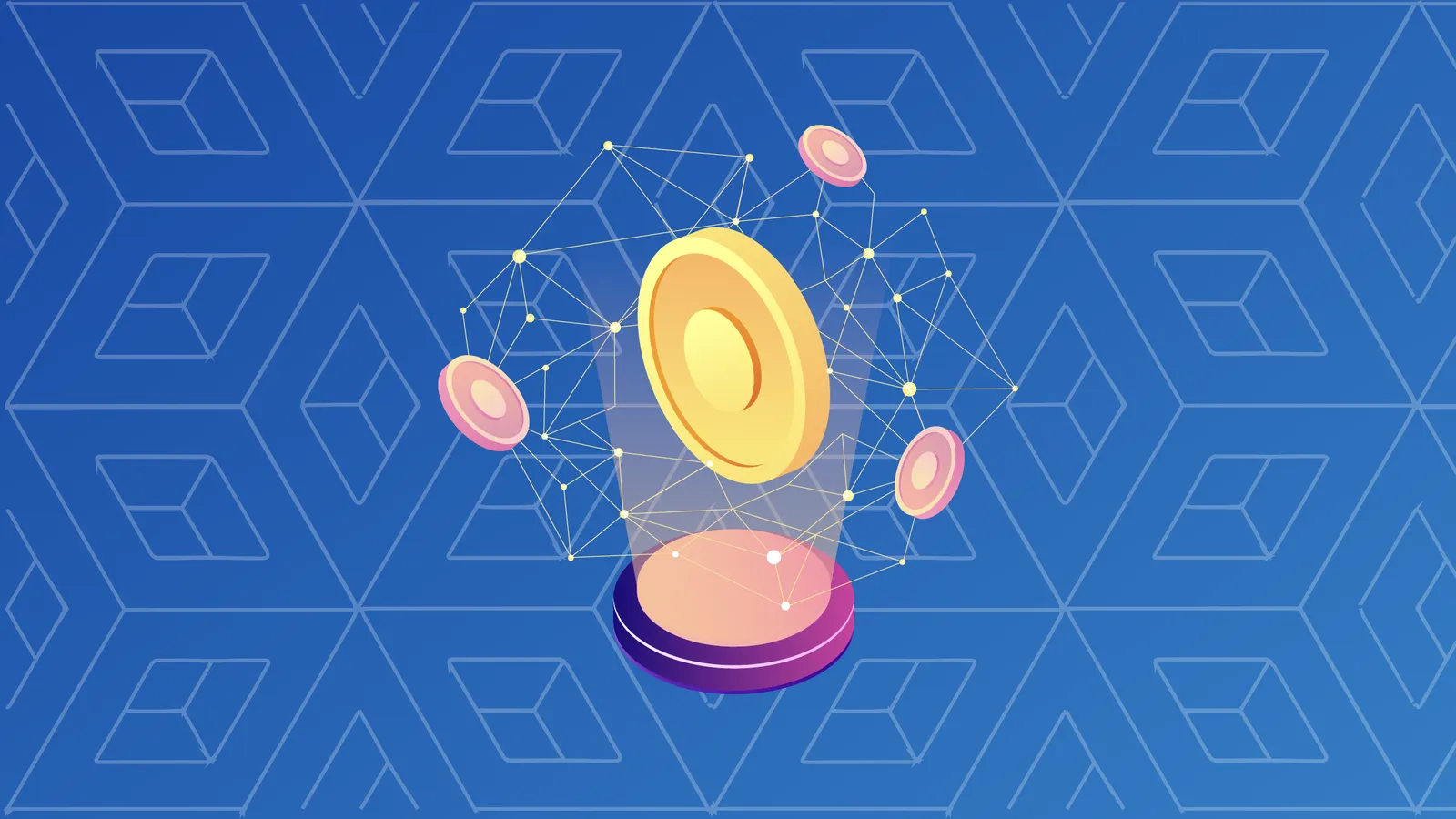Ethereum is one of the most popular and widely-used blockchain protocols. While its native coin ether (ETH) can be used to make payments like cryptocurrencies such as litecoin (LTC) or bitcoin cash (BCH), Ethereum was designed to be a far more flexible and feature-rich blockchain protocol. Ethereum allows for the execution of smart contracts and decentralized applications (dApps). It also allows for tokens to be built on top of its core protocol.
One of the most innovative ERC standards to date is the ERC-4337 standard. Like earlier token standard releases, it was designed to enable additional features and options that weren’t possible using the previously available token options.
Ethereum’s tokens are one reason it has garnered such a sizeable share of the crypto market. These Ethereum Request for Comment (ERC) tokens create concrete rules and frameworks that allow ERC tokens to be sent and received on the Ethereum blockchain. One of the most popular token standards is ERC-20, which allows you to issue new fungible tokens on the Ethereum protocol. Another popular option is the ERC-721 token standard, which allows for the issuance of non-fungible tokens (NFTs). This is one reason why many of the most popular NFT collections and fungible tokens are found on Ethereum.
There are a number of ERC token standards (ERC-777, ERC-2222, and more) on Ethereum, with new suggestions called Ethereum Improvement Proposals (EIPs) continually being proposed and discussed. Some EIPs are ultimately rejected, while others end up being released on Ethereum. Once an EIP is improved and implemented, it becomes an ERC (ERC-4337 was previously EIP-4337).
Funded through Ethereum Foundation grants, the launch of ERC-4337 was announced at WalletCon 2023. Let’s discover what ERC-4337 enables on the Ethereum protocol — and why the community decided it needed to be approved.
ERC-4337 Brings New Features to Ethereum
ERC-4337 makes enhanced crypto transaction options possible. To differentiate it from standard crypto transactions, these ERC-4337 transactions are referred to as UserOperations. This sort of blockchain enhancement would typically be done through a blockchain update and not through a new ERC standard release (more on that later).
A core new feature is that it allows for account abstraction on Ethereum in a decentralized manner (more on that below). Additionally, it allows for dApp developers to partially or fully subsidize transaction fees for users; on many dApps the user must pay these fees. ERC-4337 also allows users to pay fees with ERC-20 tokens (as opposed to ETH). This should create a decentralized fee market for smart contract operations. On top of that, it enables some privacy-preserving features and supports the use of aggregated signatures. ERC-4337 is also available on networks compatible with the Ethereum Virtual Machine (EVM) such as Polygon, Avalanche, Arbitrum, and several others.
For sending transactions, ERC-4337 enables you to bundle (combine) multiple transactions to save time and lower transaction fee costs. You will also be able to pre-approve transactions in an automated way. Most current wallets require you to manually approve every transaction. Now, you can create review processes that require additional manual approval only for certain transactions — such as transactions that send over a specified amount of crypto (more than $1,000 USD equivalent, for example).
ERC-4337’s User-Friendly Wallet Features
Through a process known as account abstraction, ERC-4337 allows for the use of smart accounts that are expected to be more user friendly for beginners. This update is expected to catalyze crypto adoption as technical barriers to entry are continually being lowered — or removed. While somewhat technical, in essence, account abstraction turns a user’s crypto wallet into a smart contract-enabled account. For this reason, many don’t call ERC-4337 a “token standard” and simply call it an ERC standard; it doesn't really fit categorically with the previous ERC token standards.
One core benefit is how account abstraction simplifies both the use and creation of wallets. Prior to ERC-4337, users generally had to memorize a seed phrase (or store this phrase offline) to create a backup of their crypto wallet. Through abstraction, a crypto wallet’s private keys can be stored on a smartphone’s standard security module. This would create what some would consider a hardware wallet within their phone — although some express concerns about a smartphone’s vulnerabilities through the touchscreen or some other avenue.
ERC-4337 allows for the use of smart accounts that are expected to be more user friendly for beginners.
ERC-4337 allows you to sign transactions biometrically through a fingerprint or face scan as an additional safety measure. Should you lose your phone, you could regain access to your account through the use of time-locked social recovery. This requires multiple users to sign a recovery transaction through a multi-signature (multi-sig) wallet. You could give a group of trusted friends or family the ability to regenerate your account. If that doesn’t suit you, you could pay a commercial third-party service to recover your account should the need arise.
Losing their wallet and the associated crypto — and being unable to recover it — is one fear people have when it comes to using non-custodial crypto wallets. There are horror stories of people losing large sums of crypto in this way. This safeguard is designed to give you some of the features and peace of mind you may have when using a bank — without having to trust a bank — thus preserving the core crypto ethos of trustlessness and permissionlessness.
In general, the implementation of account abstraction is intended to provide two benefits for wallets:
- Make crypto wallets more user friendly.
- Prevent the loss of crypto or crypto wallet access.
Why Not Update the Underlying Ethereum Protocol?
For many blockchain protocols, changes require a code update to the blockchain that is called a fork. Oftentimes, there is heated debate about whether to implement changes to a blockchain. These updates sometimes lead to a blockchain splitting into two separate networks. Called a hard fork, this has led to the 2017 Bitcoin fork that created Bitcoin Cash and even a previous splitting of Ethereum (which created Ethereum Classic). The other fork option is a soft fork. Soft forks are backwards compatible — giving users and validators the option to implement an update or not.
With the time and work that has gone into transitioning Ethereum from a Proof-of-Work (PoW) to a Proof-of-Stake (PoS) network (known as The Merge), the proposal for ERC-4337 noted that it may be some time before Ethereum goes through another significant update. For that reason, ERC-4337 was implemented as a way to enable updates that don’t change the core Ethereum protocol. Taking this innovative approach has ostensibly saved a lot of time and effort. In addition, ERC-4337 will not create compatibility issues in the way some blockchain forks have.
By taking these changes to a higher-abstraction layer (the ERC-4337 standard itself), it negates the need to implement changes to the core Ethereum protocol (the Ethereum blockchain). While this has sped up the implementation of account abstraction on Ethereum, the goal is to eventually implement this feature into the primary Ethereum protocol.
What ERC-4337 Means for Ethereum Adoption
With its notable medley of ERC-20 tokens, the popularity of ERC-721 NFTs, and the outsized presence of Ethereum within decentralized finance (DeFi), ERC-4337 will likely help Ethereum remain one of the premier blockchains as the enhanced functionality will benefit all of these disparate — but connected — niches within the wider Ethereum ecosystem.
With crypto wallet security and user friendliness at the forefront of the ERC-4337 update, we may end up seeing newcomers to the crypto space choose to start with Ethereum (and EVM-compatible blockchains) as opposed to other blockchain ecosystems. Enticed by the core benefits and ease of use enabled by ERC-4337, this may allow Ethereum to keep — or grow — the already sizable market share that it occupies within the wider crypto market. For other blockchains to remain competitive and gain market share, they may need to incorporate their own versions of higher-level account abstraction. This will let them appeal to new crypto users that want to experience Web3 with the ease of use and simplicity more commonly found in the Web2 experience.
Cheat Sheet:
- ERC-4337 allows you to bundle and automate transactions on Ethereum.
- ERC-4337 allows for social recovery of crypto wallets, biometric authentication of transactions, and the ability to store a wallet’s private keys on a smartphone security module.
- The features made possible by the ERC-4337 standard are also available on EVM-compatible blockchains.
- The ERC-4337 standard adds new features to Ethereum without the need for a major Ethereum blockchain protocol update.
- The goal is to eventually provide the features made possible through ERC-4337 through a major Ethereum protocol update.






